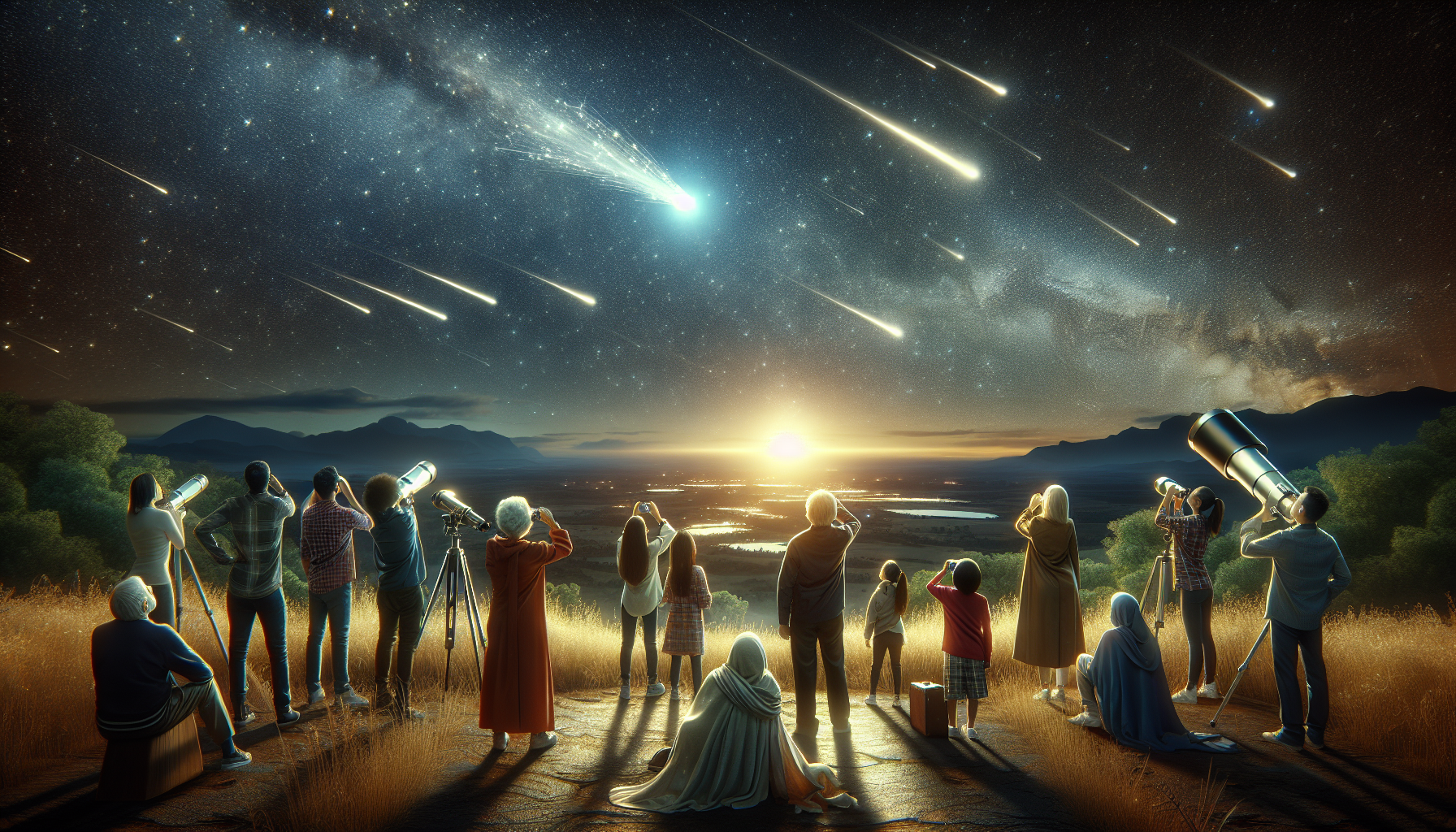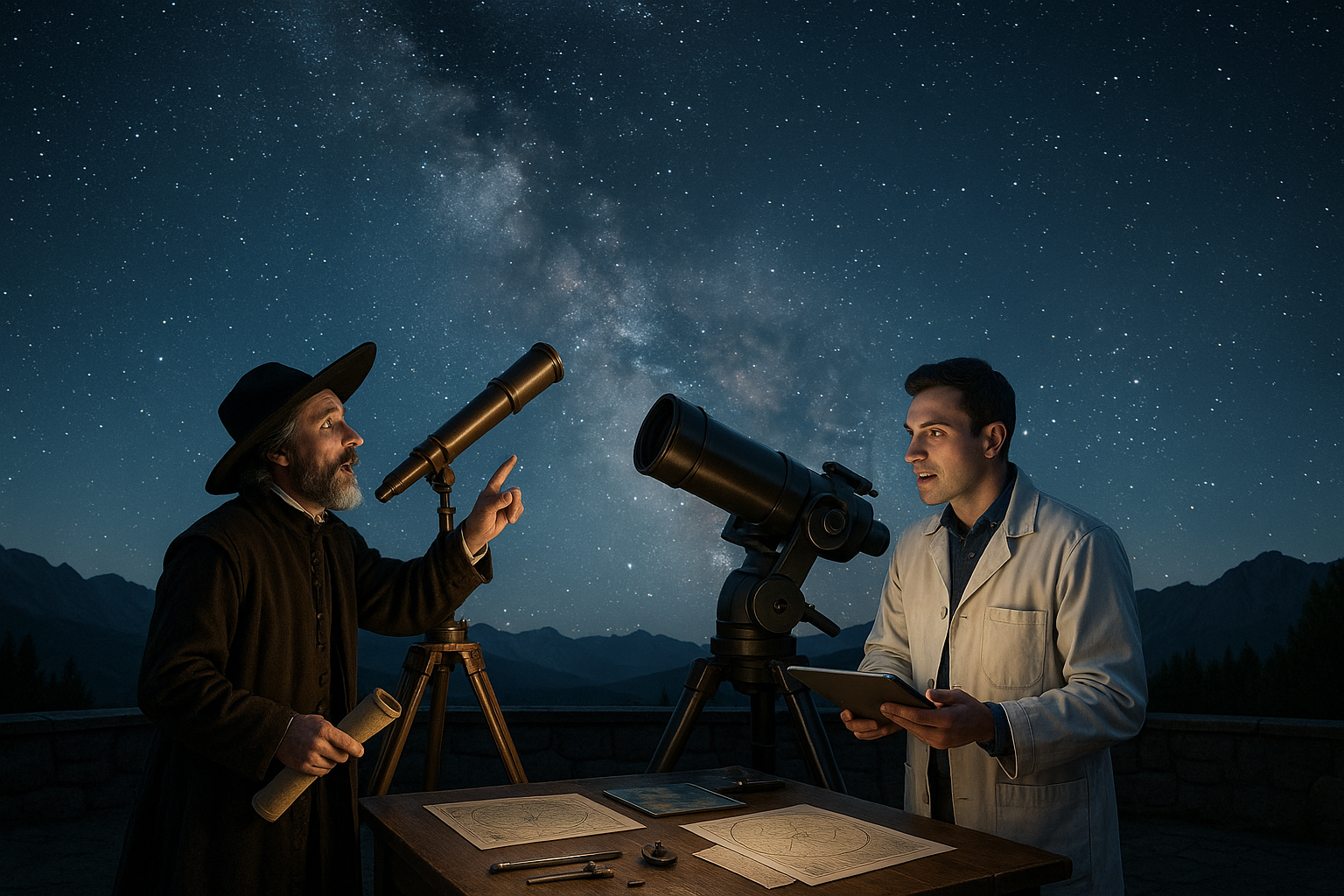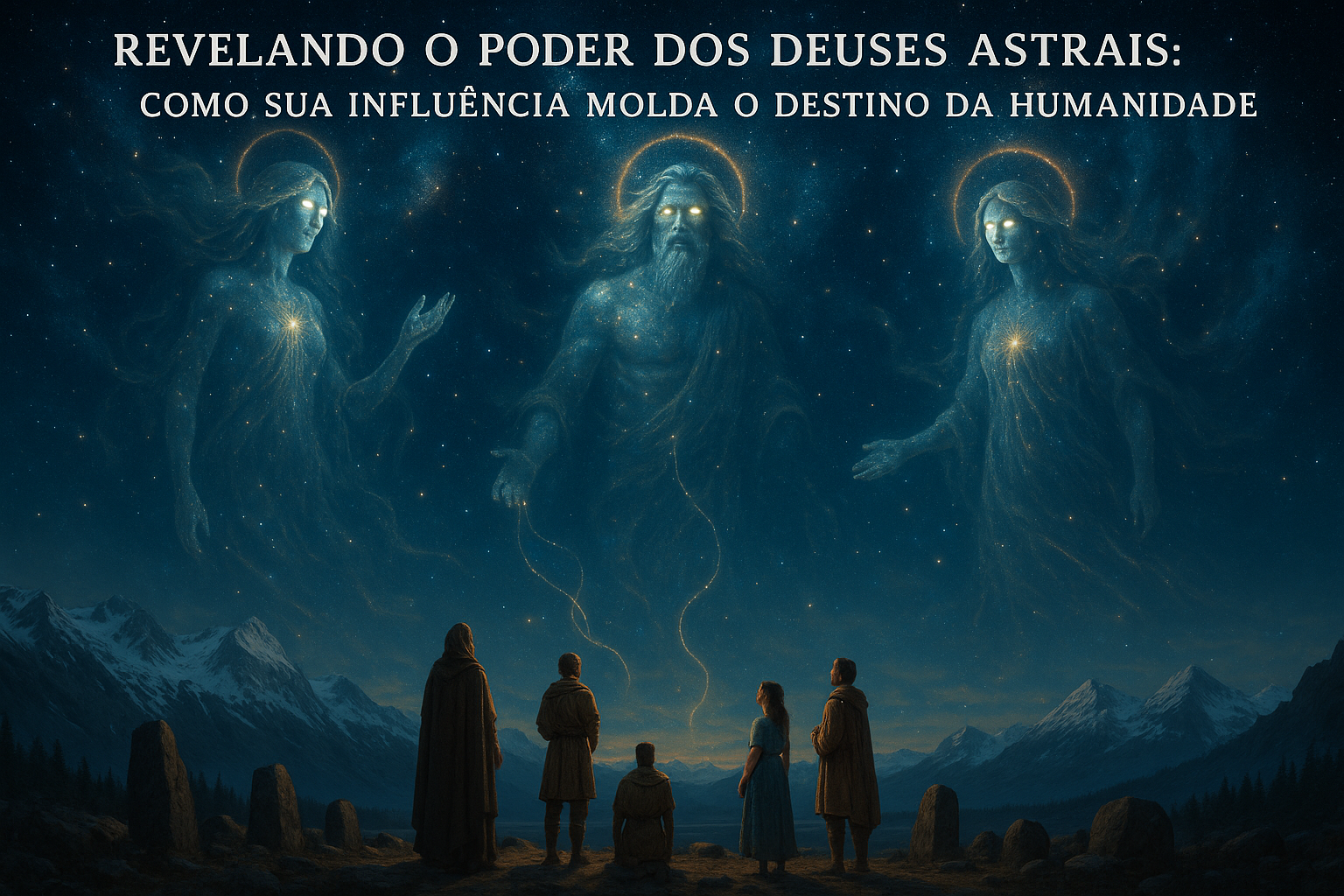In the quiet, stillness of a clear night, when the world around us seems to pause and the universe reveals its vast, mysterious canvas, there lies a spectacle that has fascinated humankind for millennia. Stargazing is more than just an act of looking up; it is a journey through time and space, a bridge between our terrestrial existence and the cosmos that stretches infinitely beyond. Among the many wonders that captivate skywatchers are the ethereal beauty of comets and the fleeting brilliance of meteors, each offering a glimpse into the dynamic and ever-changing nature of our universe. 🌌
As you stand beneath the canopy of stars, there’s an undeniable thrill in knowing that somewhere, amid the constellations, a comet is making its grand journey across the solar system. These celestial nomads, composed of ice, dust, and rocky material, carry with them secrets from the dawn of our solar system. Their glowing comas and trailing tails are not just beautiful sights to behold; they are cosmic storytellers, whispering tales of creation, evolution, and the intricate dance of celestial bodies. In this article, we’ll delve into the enchanting world of comets, exploring their origins, compositions, and the awe-inspiring spectacles they create as they approach the Sun.
Meanwhile, meteors offer a different kind of celestial drama. Often referred to as “shooting stars,” these bright streaks of light result from tiny particles burning up in Earth’s atmosphere. But there is more to meteors than meets the eye. Whether it’s the annual Perseid meteor shower or a surprise meteor outburst, these events provide a perfect opportunity to witness the raw and ephemeral beauty of our universe. We’ll uncover the science behind these fiery displays, learn about the best times to observe them, and discover the stories and myths that various cultures have woven around these heavenly phenomena. ✨
Our journey will also take us through practical aspects of stargazing, offering tips and techniques to enhance your experience. Whether you’re a seasoned astronomer or a curious novice, we’ll guide you on how to prepare for a night under the stars, including the equipment you might need, the best locations for stargazing, and how to read the night sky. By the end of this article, you’ll be equipped with not just knowledge, but a renewed sense of wonder and excitement for the treasures that await you in the night sky.
So grab your telescope, or simply your blanket and a warm beverage, and join us as we embark on this cosmic adventure. Together, we’ll uncover the hidden wonders of comets and meteors, and in doing so, perhaps we’ll find a deeper connection to the universe and to each other. After all, when we gaze at the night sky, we’re not just looking at distant worlds and phenomena; we’re peering into the very essence of existence, a shared universe that binds us all. 🌠
The Mesmerizing World of Comets
Gazing up at the night sky, one can be captivated by the breathtaking phenomenon of comets. These celestial bodies, often described as “dirty snowballs,” are remnants from the early solar system, offering a glimpse into our cosmic past. Composed primarily of ice, dust, and rocky material, comets originate from the distant reaches of our solar system, either from the Kuiper Belt or the more remote Oort Cloud. As they make their journey towards the sun, they undergo a transformation that lights up the night sky, capturing the imagination of stargazers and astronomers alike.
Comets have been observed and recorded throughout human history, often regarded with both awe and superstition. Their predictable yet rare appearances make them objects of scientific intrigue and public fascination. As they approach the sun, the heat causes the comet’s ice to sublimate, forming a glowing coma and a distinct tail that can stretch millions of kilometers. This transformation is not only spectacular to witness but also provides valuable insights into the composition and behavior of these ancient travelers.
One of the most famous comets is Halley’s Comet, which returns to our skies approximately every 76 years. This periodic visitor has been recorded by civilizations across millennia, from ancient Chinese astronomers to medieval European chroniclers. Its regularity has allowed scientists to study its structure and trajectory in detail, contributing significantly to our understanding of cometary science.
The Science Behind Cometary Tails
The formation of a comet’s tail is one of the most fascinating aspects of these celestial wanderers. As a comet approaches the sun, solar radiation heats its surface, causing the volatile materials within to vaporize. This process releases gas and dust, forming a glowing coma around the nucleus. The solar wind then pushes these materials away from the sun, creating two distinct tails: the dust tail and the ion tail.
The dust tail, composed of small particles, reflects sunlight, giving it a bright, white appearance. In contrast, the ion tail is formed by ionized gases that emit light as they interact with solar radiation, often appearing bluish. This dual tail structure offers a spectacular view through telescopes and, on occasion, to the naked eye.
For those interested in observing comets, timing and location are crucial. The visibility of a comet depends on its position relative to the Earth and the sun, as well as its inherent brightness. Websites and apps dedicated to astronomy provide up-to-date information on upcoming comet appearances, helping enthusiasts plan their stargazing sessions.
Understanding Meteors and Meteor Showers
While comets are long-term visitors to our solar system, meteors offer a more fleeting yet equally enchanting spectacle. Meteors, often called “shooting stars,” are the visible paths of meteoroids as they enter the Earth’s atmosphere and burn up due to friction. The streaks of light are brief, usually lasting only a few seconds, but they create a dazzling display against the backdrop of the night sky.
Meteor showers occur when Earth passes through the debris field left by a comet. As our planet plows through this stream of particles, the number of meteors increases, resulting in a spectacular meteor shower. Some of the most well-known meteor showers include the Perseids, associated with Comet Swift-Tuttle, and the Leonids, linked to Comet Tempel-Tuttle.
These events are predictable and can be observed annually, providing opportunities for amateur astronomers and casual observers to witness the beauty of meteors. Unlike comets, which require specific equipment and conditions for optimal viewing, meteor showers are often visible to the naked eye, making them accessible to anyone with a clear view of the night sky.
How to Best Observe Meteor Showers
To maximize your meteor shower experience, it is essential to prepare adequately. The first step is to identify the peak times of the shower, typically when Earth passes through the densest part of the debris field. This information is readily available from astronomical resources, allowing observers to plan their night under the stars.
Once the timing is set, finding a suitable location is next. Urban areas with light pollution can significantly hinder meteor visibility, so seeking out a dark, open space away from city lights is advisable. Additionally, allowing your eyes to adjust to the darkness will enhance your ability to spot meteors.
Patience is key when observing meteor showers. Bring a comfortable chair or blanket, and be prepared to spend several hours outside. While some showers boast hundreds of meteors per hour, others may produce fewer, making persistence essential to catching a glimpse of these fleeting wonders.
Comparative Table of Comets and Meteors
To better understand the differences and similarities between comets and meteors, the following table highlights key aspects of each:
| Feature | Comets | Meteors |
|---|---|---|
| Origin | Kuiper Belt and Oort Cloud | Asteroids and Cometary Debris |
| Composition | Ice, dust, rocky material | Rocky or metallic material |
| Appearance | Glowing coma and tails | Bright streaks in the sky |
| Visibility | Occurs over weeks to months | Lasts a few seconds |
For a more visual explanation, check out this video on comets and meteors by NASA.
Connecting with the Cosmos Through Stargazing
Stargazing is more than just a pastime; it’s a connection to the universe. Observing celestial events like comets and meteors can evoke a sense of wonder and curiosity about our place in the cosmos. It encourages people to look beyond their immediate surroundings and contemplate the vastness of space and time.
For beginners, starting with easily visible constellations can provide a foundation for understanding the night sky. Resources such as star maps and mobile apps can aid in identifying celestial objects and tracking upcoming events like comet appearances or meteor showers.
Stargazing also fosters community and education. Astronomy clubs and online forums offer platforms for enthusiasts to share experiences, tips, and observations. These communities are invaluable for learning and staying informed about the latest discoveries and viewing opportunities.
Tips for an Enhanced Stargazing Experience
For those new to stargazing, a few simple tips can enhance the experience. First, familiarize yourself with the night sky by learning the major constellations and planets visible in your area. This knowledge will make it easier to locate specific events like comets or meteor showers.
Investing in a good pair of binoculars or a telescope can also enrich your stargazing sessions. These tools can reveal details not visible to the naked eye, such as the craters on the moon or the rings of Saturn. However, even without equipment, a clear night sky can offer plenty of wonders to behold.
Lastly, remember to dress appropriately for the weather, especially during colder months. Stargazing is best enjoyed when you are comfortable and prepared for the conditions, allowing you to fully immerse yourself in the beauty of the night sky.
For a deeper dive into the world of astronomy and stargazing, consider joining a local astronomy club or participating in online forums. These communities are filled with enthusiasts eager to share their knowledge and passion for the stars.

Conclusion
Certainly! Here is a comprehensive conclusion for your article on stargazing:
—
In conclusion, the wonders of stargazing, particularly the awe-inspiring phenomena of comets and meteors, offer us a unique opportunity to connect with the universe. Throughout this article, we’ve delved into the fascinating aspects of these celestial events, exploring their origins, their significance, and the sheer beauty they bring to our night sky.
We began by examining the scientific fundamentals of comets and meteors, highlighting how these celestial bodies are remnants of the early solar system. Comets, with their icy nuclei and spectacular tails, have long been a source of intrigue, both for ancient civilizations who revered them as omens and for modern scientists who study them to unlock the mysteries of our cosmic neighborhood. Meteors, on the other hand, provide a dazzling display as they streak across the sky, a reminder of the ever-present motion and activity within our solar system.
The significance of these phenomena extends beyond their beauty. They are natural reminders of our place in the cosmos, prompting philosophical and existential reflections. The rarity and unpredictability of meteor showers and comet appearances make them particularly special events, encouraging us to pause, look up, and appreciate the universe’s grandeur. They inspire a sense of wonder and curiosity that drives scientific inquiry and personal introspection alike.
Furthermore, stargazing is an activity that transcends age, culture, and background, fostering a sense of community among enthusiasts around the world. Whether you’re a seasoned astronomer with a telescope or a casual observer enjoying the view with the naked eye, the experience of witnessing a meteor shower or a comet is universally awe-inspiring. This shared appreciation can bring people together, encouraging collaboration and the exchange of knowledge and ideas.
The importance of preserving our night skies cannot be overstated. Light pollution poses a significant threat to our ability to observe these celestial wonders. By advocating for dark-sky initiatives and supporting policies that reduce unnecessary artificial lighting, we can help ensure that future generations will continue to enjoy the beauty of comets and meteors. Education and awareness are key in this endeavor, as is the promotion of responsible stargazing practices.
As we conclude our exploration of the beauty of comets and meteors, we encourage you, the reader, to take action. Venture outside on a clear night, find a dark spot, and let the cosmos reveal its secrets. Share your experiences with friends and family, or even join a local astronomy club to connect with fellow enthusiasts. By spreading awareness and fostering a sense of community, we can all contribute to a greater appreciation of our universe.
Finally, let this be an invitation to keep looking up. The sky above is a dynamic and ever-changing canvas, offering endless opportunities for discovery and inspiration. Whether it’s the sudden streak of a meteor or the slow, graceful arc of a comet, these phenomena remind us of the vastness and beauty that lies beyond our earthly confines. Embrace the wonder, share your insights, and let the stars guide you to new horizons.
Feel free to comment below with your own stargazing stories or share this article with others who might be inspired by the marvels of the night sky. Together, let’s celebrate the magic of comets and meteors and continue to nurture our curiosity about the cosmos. 🌌✨
For further reading and to expand your knowledge on this fascinating topic, consider exploring resources from trusted organizations such as NASA and The International Dark-Sky Association. These platforms offer a wealth of information on astronomy and how we can all play a part in preserving the beauty of our night skies.
—
I hope this conclusion meets your needs for the article!
Toni Santos is a visual storyteller and cosmic interpreter whose work illuminates the ancient skywatchers and their prehistoric astronomy—the profound ways early humans observed and revered the heavens before written history. Through a visionary lens, Toni explores how the stars, planets, and celestial cycles shaped myth, ritual, and survival in cultures lost to time.
Rooted in a fascination with archaic observatories, stone alignments, and celestial symbolism, Toni’s creative journey reveals the deep human impulse to understand and harmonize with the cosmos. From lunar phases guiding planting seasons to the sacred paths of the Milky Way, each of his works embodies the awe and knowledge encoded in the night sky.
Combining artistic craftsmanship with archaeological insight, Toni’s pieces evoke the mystery and precision of prehistoric astronomers. His work does more than depict—it channels the timeless dance between earth and sky, bridging ancient wisdom with contemporary wonder.
As the visionary behind Vizovex, Toni shares curated visuals, essays, and symbolic studies that invite others to reconnect with the cosmic heritage written in stone and starlight. His creations are a call to look upward, to listen to the silent stories told by the stars, and to honor the first astronomers who mapped the heavens with reverence and ingenuity.
His work is a tribute to:
The celestial wisdom of prehistoric peoples
The sacred geometry of ancient observatories
The enduring bond between human culture and the cosmos
Whether you’re a stargazer, a scholar of ancient mysteries, or someone captivated by the universe’s earliest storytellers, Toni welcomes you to journey through a space where the sky is both map and myth—one constellation, one ritual, one revelation at a time.




